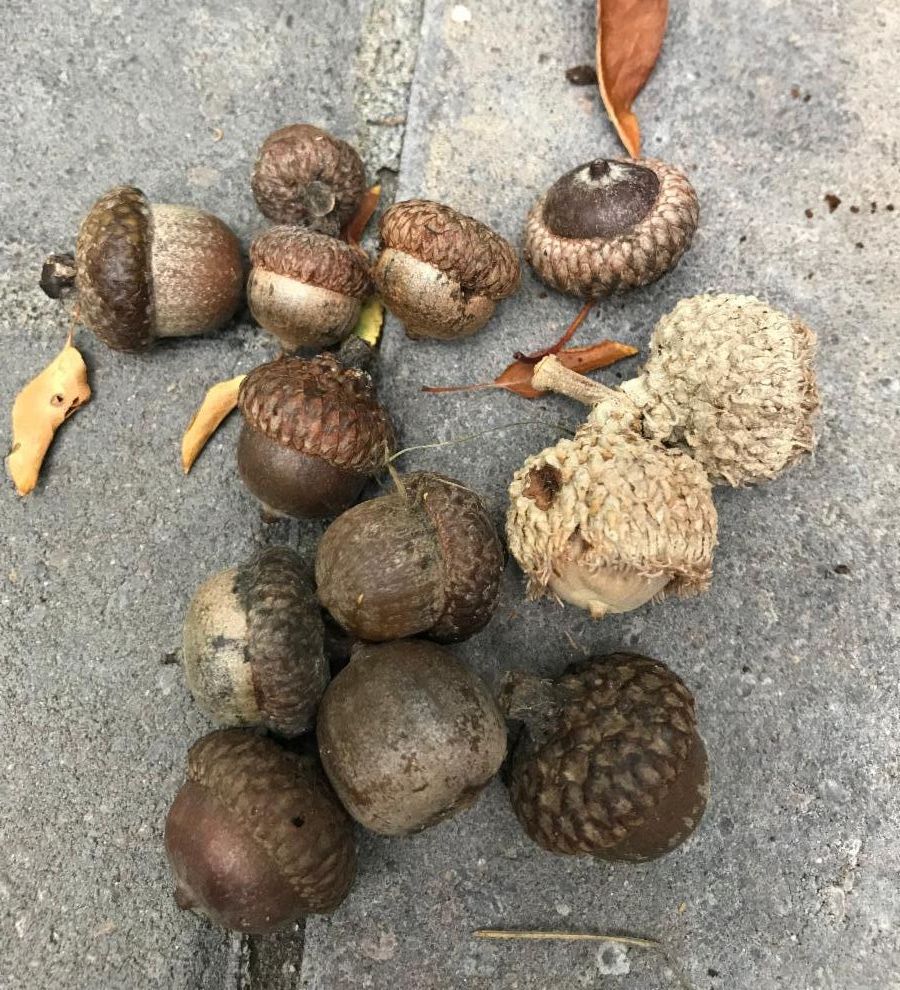|
Start gathering acorns in the fall. Look for large, heavy acorns with a cap that is missing or readily falls off when you put pressure on it. If you see tiny round holes in the shell, the nut inside has probably been destroyed by weevils, which bore into acorns. Discard any affected nuts.
Put the collected acorns in a bucket of water. Remove any that float, an indication they are dead or damaged. Those that float have airspace within and are likely to contain weevil grubs or other interesting bugs. Acorns that sink in water are usually intact and unlikely to be infested by weevils. Let the rest soak for a day or two, until the shells look saturated, and again remove any that are floating.
Strain the acorns and put them into plastic freezer bags partially filled with dampened vermiculite and store them over winter in the refrigerator.
Check the acorns throughout the winter and make sure they stay barely moist. White oak species group (white oak, bur oak, swamp white oak, post oak, Chinkapin oak,) acorns root in fall, so you may see roots forming in the bag over winter. They should be okay, protected by the vermiculite. Red oak species group (northern red oak, pin oak, northern pin oak, scarlet oak, shingle oak, Shumard oak, black oak) need a minimum of 42 days of chilling at 40 degrees Fahrenheit.
Plant the nuts in spring. Plant each pre-chilled, germinating acorn in a sterilized, one-gallon container with drainage holes. Plant the acorns on their side in a soil medium comprised of two parts peat-based seed-starting potting mix and one part coarse perlite. To sterilize containers, soak them overnight in a household bleach solution of 9 parts water to 1 part bleach, then rinse thoroughly. Cover with 1 to 2 inches of soil medium.
Place the containers in light shade, gradually moving them into more sun after a few weeks. Keep the soil moist but not wet. Do not allow the oak's taproot to growth through the bottom of the container. This will damage the plant. If you need to repot, gently lift the entire root ball out of the container and place it into a deeper pot.
Acorns from the easier-rooting white oak species group do not require cold stratification and can be planted directly outside in fall. However, they must be covered with some type of wire mesh to prevent being dug up by deer, squirrels, and other rodents. It is a good idea to "dome" the mesh over the planting bed so the delicate seedlings don't emerge and get tangled in the mesh.

The first step is to simply go outdoors to your favorite oak and collect a batch of acorns.

An acorn and leaves from a red oak. Red oaks leave have pointed lobes. White oaks have rounded lobes.

On close inspection this acorn has a tiny perfectly circular hole on the hull. This is the work of the acorn weevil.
For more information on how to plant acorns |